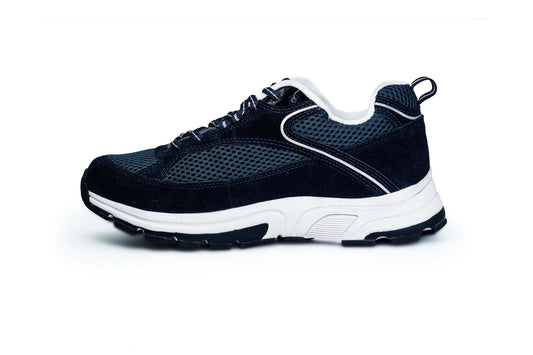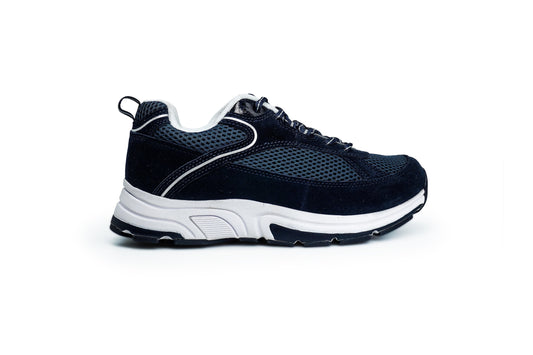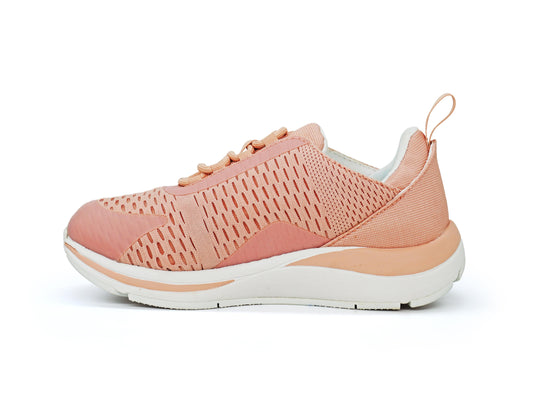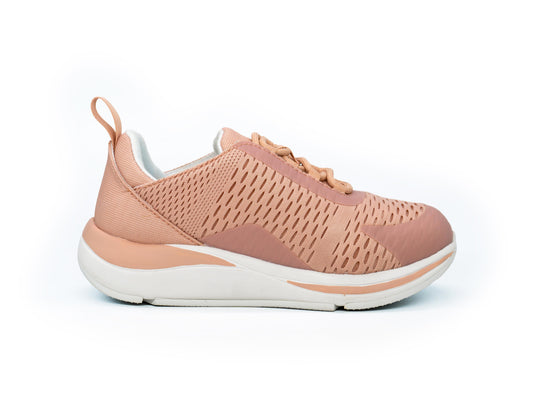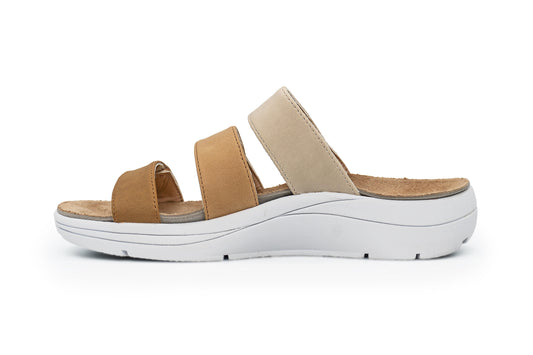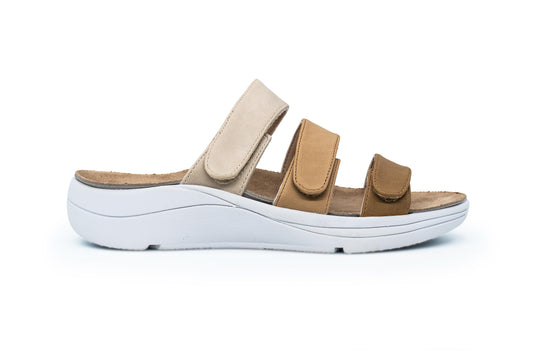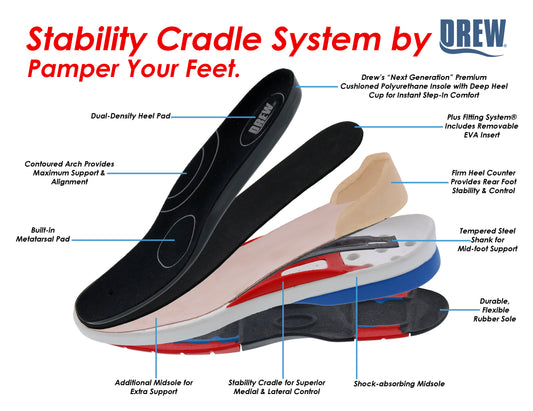HOW DIABETIC SHOES ARE DIFFERENT: A DETAILED COMPARISON TO REGULAR SHOES
Diabetes is a long-term medical condition that involves how the body controls blood sugar levels. Many diabetic patients have foot complications related to the disease, of which one of the most common complications is diabetic neuropathy. This damage is caused to the nerves due to diabetes, which leads to an alteration in feeling, poor blood flow, and increased infection in the patient. The complications need to be managed and prevented, so wearing appropriate shoes is crucial. Diabetic shoes are designed for enhanced protection, comfort, and support for those with diabetes. In this article, we will find the key differences between diabetic shoes and other shoes and explain why diabetic shoes are an important tool in keeping foot health at its best in diabetes.
Diabetic shoes are designed to protect sensitive feet from further injury, thereby preventing pressure points and improper fitting. These shoes also have more depth and width to provide space for such deformities as hammertoes, bunions, and swelling. The seams of the interior of these shoes are seamless or less to prevent rubbing and irritation since people with diabetes often suffer from reduced sensations in their feet. It protects against blisters and callus buildup in painful blisters which eventually may bring on an infection that becomes dangerous. Foot deformities or further complications are less likely to develop, as they provide a high toe box through which it easily moves free from constriction.
On the other hand, regular shoes usually come in a standard size, and therefore, cannot be tailored to serve a specific need of a diabetic. Standard shoes don't have the same kind of depth, width, and comfort features that diabetic shoes possess. For instance, regular shoes have a narrower toe box, which could cause stress on the toes, more so for those with some kind of foot deformities. Regular shoes also contain seams or stitching in areas that could rub against sensitive feet and increase the risk of blisters or skin irritation.
Diabetic shoes usually have specialized cushioning and shock-absorbing insoles to reduce the impact on the feet when walking or standing. The insoles are usually made of materials such as memory foam, gel, or EVA (Ethylene Vinyl Acetate), which distribute pressure evenly across the foot. This is important for people with diabetes because uneven pressure can lead to calluses, blisters, and ulcers, which may go unnoticed due to nerve damage.
Regular shoes can have a little cushion, but certainly not with a focus on shock absorption or pressure distribution. Most common shoes in the market have the insole relatively thin so that, especially in areas such as the heel, arch, and toes, it provides them with inadequate support. These areas tend to have the most vulnerability to diabetic injury, considering the usual discomfort that leads to its onset.
Diabetic shoes are essential with appropriate arch support for diabetes patients. Most diabetic patients often suffer from flat feet and overpronation, which causes their feet to roll inward excessively. Diabetic shoes usually include customized arch support or insoles, helping to keep the foot straight and in the correct position, thus not overstressing it. This usually reduces plantar fasciitis conditions, which are also prevalent among diabetes patients.
Regular shoes typically present standard arch support that often does not suit foot deformation or special needs. Diabetic patients often require customized or more pronounced support against complications. Standard shoes for those who experience swelling, and foot deformities may weaken the stability of the body with nerve damage, increasing discomfort and risk of injury.
Fit, because improper fit leads to pressure points, rubbing, and skin damage, is of utmost importance for diabetic shoes. Such shoes are designed with the consideration of adjustability to suit the needs of the user in any situation, whether in cases of swelling due to heat or swelling due to activity, by using Velcro straps, laces, or elastic closures. This flexibility allows the ability to accommodate changes in the size of the foot, which is important when dealing with diabetics, as swelling is prevalent due to poor circulation.
Regular shoes do not offer the same level of adjustability as diabetic shoes. Although some of the shoes have laces or Velcro, they may not offer the kind of flexibility required to accommodate swelling in the foot or changes in the shape of the foot during the day. Additionally, regular shoes do not offer the facility of inserting custom orthotics, which may make it challenging for those with specific foot conditions to achieve the support they require.
Diabetic shoes are made using materials that can help with foot health and comfort. Diabetic shoes are usually designed with soft, breathable leathers, mesh, or synthetic fabrics that enable airflow to keep the feet dry and prevent fungal infections. These materials will help prevent excessive sweat that can create blisters or encourage the development of fungi, especially in patients with poor circulation.
Regular shoes are not specifically designed for breathability. For example, formal and dress shoes require quite a lot of prevention from moisture; however, some breeds of athletic shoes can help improve air circulation. Generally, standard shoes might lack the same moisture-controlling elements or comfort features for diabetic feet, and dampness is more likely to be induced if air cannot pass through.
Diabetic shoes are designed to meet the special needs of diabetic patients. They provide comfort, support, and protection that are far better than regular shoes. From superior cushioning and arch support to adjustability and seamless interiors, diabetic shoes are an important tool in preventing foot complications, such as ulcers and infections, which are very common among diabetic patients.
While regular shoes may be sufficient for those without foot problems, people with diabetes need to take special care of their feet by selecting diabetic shoes that can offer the features needed to maintain comfort and avoid possible foot problems. Wearing properly designed diabetic shoes will significantly reduce the risk of developing serious complications related to the feet and improve the quality of life.
Take the Next Step Towards Comfort and Care
Discover the perfect balance of support, style, and expert guidance for your feet. Explore our collection of orthopedic and diabetic shoes designed to keep you moving with ease.
Start your journey to happy, healthy feet today!
Visit us at DiabeticShoe for more tips, insights, and footwear solutions.
Stay Connected:
Follow us on Facebook, Instagram, YouTube, LinkedIn, Twitter, Pinterest, and Quora for updates, advice, and more informative content.

